- Climate Change
- Posted
Shifting ground

Unless greenhouse gas emissions from land are tackled, any efforts to reduce emissions from buildings may fall short in attempting to stave off the worst consequences of climate change. Richard Douthwaite explains how, with a little ingenuity, techniques can be applied to dramatically reduce land emissions whilst simultaneously providing new raw material streams and energy sources
Most people have the impression that the world's climate problem is all to do with the emissions from fossil fuels. That's wrong. About 30 per cent of the problem emissions are due to the way that people are using, or misusing, the land. Consider the most important greenhouse gas, carbon dioxide, alone. About 7.4 gigatonnes of CO2 are released into the atmosphere each year just as a result of deforestation, mainly in the tropics. This compares with about 25.9 gigatonnes of CO2 released by cement production and the burning of fossil fuels combined.
Methane, an even more powerful greenhouse gas than CO2, is produced both naturally and by farming. Bogs and other wetlands are the main natural source - think of will-of-the-wisp, the mysterious lights caused by the spontaneous burning of methane from rotting vegetation seen on bogs at night. Human land-related methane sources, which have grown to be roughly twice as big as the natural ones, include vegetable-matter dumped in landfills, ruminant animals such as cattle and sheep, (these belch methane produced by the bacteria in their stomachs), the growing of rice in flooded fields and the burning of biomass.
Nitrous oxide is another important greenhouse gas. Its agricultural sources include the transformation of nitrogenous fertiliser into N2O and its subsequent release from the soils, biomass burning and, again, the raising of cattle.
Taken together, these land-use-related emissions are so large that the world's climate cannot be stabilised just by phasing out fossil fuels. The way land is used has to be changed drastically as well. Indeed, phasing out fossil fuels could exacerbate land-use emissions by causing land to be switched from one use to another. For example, the production of palm oil on bogs in Indonesia causes the release of more CO2 into the atmosphere when the jungle is cleared so that the plantations can be established than will be saved by the use of the oil in diesel engines for at least 100 years. In the same way, turning Irish grassland into arable to grow, say, rapeseed oil would cause some of the soil carbon to become CO2 in the air and nitrous oxide would be given off when fertiliser was applied.
Because Ireland's agricultural sector is big in relation to the rest of its economy, its land-use emissions are large in relation to its fossil fuel ones too. The ratio is the highest in the EU, in fact. As a result, if we don't change our land use methods quickly, we are likely to have to pay larger fines or make even more drastic cuts in our fossil fuel emissions than any of our EU partners. Since about 27 per cent of Irish emissions come from the land and the overall emissions cuts we are required to make by 2020 could be as high as 30 per cent, we might find ourselves having to make 40 per cent cuts in fossil fuel use if farming emissions can't be brought down.
This has been keeping Department of the Environment officials awake at nights. About half the country's agricultural emissions come from cattle and sheep and they think that Ireland is going to have to make a choice between running cars and keeping cows. However, this choice makes no sense at all. One reason is that, unless the world ate less meat, if Ireland reduced its national cattle herd, global emissions from cattle would not fall. The animals would just be raised somewhere else, perhaps in Brazil, where if forest land was cleared for pasture for them, the world's emissions would actually increase.
A second reason is that the two emissions are not comparable and the choice the country may be asked to make is invalid. The methane from cattle breaks down quite quickly in the air. Its half-life is seven years, which means that half of any quantity released has been broken down into CO2 and water after that period. As a result, half the CO2 which the plants the animals consumed had absorbed as they grew is back in the air after seven years. All feeding grass to cattle has done is to add a methane stage to the natural carbon cycle.

The mysterious lights of the will-of-the-wisp, caused by the spontaneous burning of methane from rotting vegetation

Biochar, a charcoal produced from biomass, sequesters substantial amounts of carbon, and was used by people along the Amazon to preserve soil fertility
This methane does have a warning effect and, if the number of cattle kept in Ireland increases, there will be an increase in that effect. But the effect is a once-off as no new carbon is being added to the biosphere. The burning of fossil fuels, by contrast, adds fossil carbon to the biosphere continuously, and thus increases temperatures year after year.
The department needs to get the country off the hook by establishing that the international accounting rules for ruminant emissions are wrong. That would reduce our national emissions by 13 per cent at a stroke and save the taxpayer a lot of money. If emissions permits had to be bought in to cover the methane belched by cattle, and the price per tonne of CO2 equivalent was the current level in the EU's Emissions Trading Scheme of about e25, it would cost a farmer about e40 a year extra to keep a beef animal and the national bill would come to around e250 million annually.
The accounting rules are defective in other areas as well. For example, a lot of Irish bogs have been drained and are drying out, with the result that their peat is becoming exposed to the air and is oxidising, giving off CO2. This is not counted in the national returns which the EPA assembles each year. However, the CO2 is warming the planet and just blocking the drains and letting the bogs flood again would be the fastest, cheapest way that Ireland could cut its emissions. The Irish Peatland Conservation Council will release a report on this soon.
Another accounting anomaly is that carbon taken up by woodland over 20 years old is not allowed to count against carbon being released elsewhere. This is potentially important as there is evidence that all Ireland is becoming “greener” and has more carbon locked up in its trees and bushes than ever before. Just compare a photograph of, say, a view in the West of Ireland 100 years ago with the same view taken today. You will notice that today's shot has many more, and bigger trees. Matt Tyburski of University College London has large-scale satellite photographs of much of the world taken ten years apart and says that the greening effect is widespread and quite marked: there's more biomass around globally, possibly as a result of the fertilisation effect of the extra CO2.
We should not get hung up on these quibbles about the carbon accounting rules, however. While they will matter if Ireland has either to achieve a higher emissions-cut target or face penalties, removing them is a deckchairs-on-the-Titanic exercise from the perspective of the planet as a whole. What matters at a world level is that emissions are reduced, not which country does so.
But it goes beyond that. There is a growing body of opinion that the level of greenhouse gases in the atmosphere is already too high and that a self-perpetuating warming process has begun which, unless nipped in the bud, will make most of the world uninhabitable. The leading American climate scientist, Dr. James Hansen, who spoke recently in County Cork, believes that the maximum concentration of CO2 in the air should be no more than 350 parts per million, a level it passed around 1989. “Recent greenhouse gas emissions place the earth perilously close to dramatic climate change that could run out of our control, with great dangers for humans and other creatures." Hansen said in 2007. “The safe upper limit for atmospheric CO2 is no more than 350 ppm”.
The current level is about 387 ppm, so the quantity needs to be reduced by around 10 per cent before the full warming effect of the surplus gas has taken effect – the seas give the planet considerable thermal inertia because they need a lot of heat to warm them up. However, instead of reducing the atmospheric concentration of CO2, humanity is increasing it at about 0.5 per cent a year.
So how can the CO2 we've so carelessly released be recovered from the atmosphere? Plants, whether on the land or in the sea, seem the best solution. Although the late American oceanographer John Martin once joked "Give me a tanker full of iron and I'll give you an Ice Age" the idea removing CO2 by fertilising the sea with iron salts is being treated with great caution. The basis of the concept is that that the factor limiting the growth of plant-plankton in the sea is a shortage of the iron required to make chlorophyll. Supply the iron, and the amount of plankton can increase, taking in CO2 from the water as it grows.
And, sure enough, that's what happens. What's not yet known is what takes place after that. In theory, the extra plant plankton should lead to an increase in animal plankton feeding on it. Although some of this zoo plankton will be eaten by fish, some should die and their shells, made up largely of calcium and CO2, should fall to the sea bed, sequestering the CO2 there in what could eventually become a new layer of chalk.

Purdue professor Nathan Mosier works with a portable biorefinery designed for the US military, which is designed to convert waste into electricity
Attracted by this possibility, commercial firms have been planning to mix iron salts in the sea, estimate the amount of carbon dioxide captured and sell it on the carbon-trading market. Unfortunately, the Surface Ocean Lower Atmosphere Study, an international research group based at the University of East Anglia, fears that this could be harmful. It could endanger fish by reducing the amount of oxygen dissolved in the sea, affect climate and air quality by altering the ocean's trace gas emissions and change the sea's biodiversity. “Given our present lack of knowledge, [our] judgment is that ocean fertilisation will be ineffective and potentially deleterious, and should not be used as a strategy for offsetting CO2 emissions” SOLAS says.
The sequestration of carbon in plants and the soil by changing farming methods is likely to prove much less controversial. A lot of hope is being pinned internationally on biochar, charcoal produced from biomass. I mentioned it in an earlier Construct Ireland article saying it had been used by pre-Colombian people along the Amazon to preserve their soil's fertility.
While biochar has been shown to persist in soil for for hundreds if not thousands of years, it will be impossible to return CO2 levels to 350 ppm just by making it and putting it in the ground. The scale required is too great. To have any effect, the world would have to sequester at least half as much carbon as biochar as is currently being extracted embodied in gas, oil and coal. The effort to do so would be stupid, anyway. Why not just burn the biochar instead of the coal?
The only reason why the idea might work is that biochar, a form of activated carbon, takes in nutrients such as nitrates and phosphates and holds on to them, preventing them being leached away. This was what made it so valuable along the high-rainfall Amazon. Plants growing on the soil in which it is mixed get access to the nutrients by establishing a symbiotic relationship with the soil fungi. The plants send sugars down through their roots to feed the fungi, which greatly increase in weight, and the fungi release the nutrients from the biochar in return. In effect, the plants sequester carbon themselves, multiplying the amount of carbon that was added to the soil as biochar several times.
What's more, the plants do well, becoming bigger than before, and this locks up more carbon at least temporarily. A virtuous cycle is conceivable, with biomass being turned into biochar, leading to greater fertility and more biomass, and thus more biochar, which allows more land to become more fertile.
The plants produced on biochar-improved land would not just be used to produce biochar either. Here's how a soil carbon sequestration cycle might work in Ireland. Farmers start growing miscanthus (elephant grass) because it gives about the biggest annual dry matter yield of any crop open to them. Yields increase yearly to reach a maximum level in year five which is maintained for many years. A yield of 20 t/ha should be achievable but a range of between 15t/ha to a potential 25t/ha could be achieved on good sites. In addition, after four years, a crop of miscanthus will have laid down 15-20 tonnes of below ground biomass in its roots and the soil. This amounts to 7.2-9.2 tonnes of carbon per hectare. This stays and builds in the ground as there are no annual cultivations to release this carbon as there would be with conventional arable crops such as wheat and barley.

A diagram showing the range of materials produced using the innovative bio-refinery at the Solanic factory in Groningen

The Austrian town of Gussing, which implemented a successful biomass production policy, would have opted for piping synthetic natural gas made from wood fuel instead of investing in district heating, if it were to start from scratch
The miscanthus is too valuable to char straight away – about a fifth of its dry weight is protein. So. the farmers take it to a local bio-refinery (the grass is low value and bulky, so it can't be carried far) where it is crushed and the juices extracted. These contain sugars and plant protein. The protein is curdled by adding washing soda so that the curd can be extracted and made into animal food or a tofu-equivalent. The remaining liquor might then go into an anaerobic digester where the sugars become methane. That leaves the crushed stems, which are mostly cellulose. These could be pressure-cooked at 200 degrees in dilute sulphuric acid to break up the molecules into furans, levulinic acid and lignin, the glue which holds the plant fibres together.
The lignin can then be charred and some of it heated with steam to produce hydrogen and carbon monoxide. These gases can then be mixed with the methane from the digester to give a synthetic natural gas which can either be piped to people's homes, or used to power an engine to generate electricity or compressed to be used in cars.
Incidentally, Gussing, the pioneering Austrian town I wrote about in a previous issue, has apparently decided that, if it was to be developing its energy systems today, it would not install district heating. Instead, it would turn all its wood fuel into synthetic natural gas because the cost of providing gas mains is so much less than digging the big trenches required for adequately insulated hot water pipes. In view of this, the designers of Clonburris, the exciting new town being planned for South County Dublin near Clondalkin, might like to reconsider the provision they have made for district heating pipes.
The furans would be transported to a regional refinery to become a diesel fuel. The levulinic acid would be sent away too as it is the starting point for a whole range of chemicals including nylon. Meanwhile, the remaining char would be used by the local refinery to purify the liquor coming from the digester. The char would tie up the plant nutrients it found there and would be put back on the land both to sequester carbon and increase fertility. Taking all these steps together, a whole new set of rural activities would be born.
No-one seems to know how many times its own weight of carbon the biochar would get the plants to sequester in Irish soils. It presumably depends on the type of soil, its water content and the crops being grown. Whatever the figure, biochar would help reduce the land's effect on the climate in another way as well – it would reduce nitrous oxide emissions by tying the nitrates up in the soil and preventing de-nitrifying bacteria from breaking them down. A recent research paper reports that methane emissions were completely suppressed and nitrous oxide emissions were reduced by 50 per cent when biochar was applied. As a result, “fertiliser is used more efficiently by crops in situations where biochar is applied.”
So seriously does the Department of the Environment take the land-based emissions problem that it is funding a three-year project to come up with recommendations. This is being co-ordinated by Feasta and involves leading researchers from Ireland and beyond. The exciting thing about the project is that it involves envisaging a whole new way of living in this country and then working out if it's feasible or not. I'll keep you informed how it gets on.
- Articles
- Climate Change
- Shifting ground
- fossil fuels
- emissions
- landuse
- methane
- c02
- bogs
- wetlands
- nitrogenous fertiliser
- Irish Peatland Conservation
Related items
-
 Much ado about nothing
Much ado about nothing -
 Property industry faces ‘triple threat’ from climate crisis
Property industry faces ‘triple threat’ from climate crisis -
 Irish Green Building Council launch event to promote sustainable building practices
Irish Green Building Council launch event to promote sustainable building practices -
 Ashden Awards winners showcase climate solutions
Ashden Awards winners showcase climate solutions -
 Decarbonising buildings “most important issue” – Climate Change Committee
Decarbonising buildings “most important issue” – Climate Change Committee -
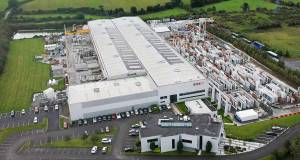 Techrete aims for net zero carbon by 2030
Techrete aims for net zero carbon by 2030 -
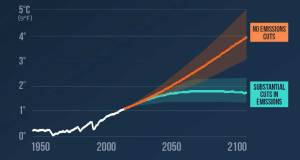 ‘Sufficiency’ key alongside energy efficiency & renewables, says IPCC
‘Sufficiency’ key alongside energy efficiency & renewables, says IPCC -
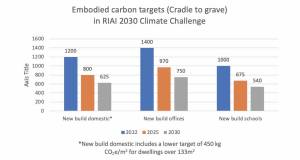 RIAI launches 2030 climate challenge
RIAI launches 2030 climate challenge -
 Climate action plan sets embodied carbon targets for construction
Climate action plan sets embodied carbon targets for construction -
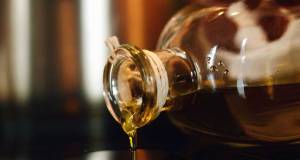 Grant invests in biofuel tech for oil boilers
Grant invests in biofuel tech for oil boilers -
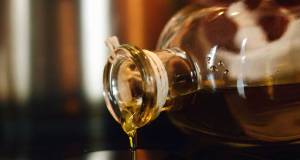 Oil heating sector pivots to biofuels, but green groups raise concern
Oil heating sector pivots to biofuels, but green groups raise concern -
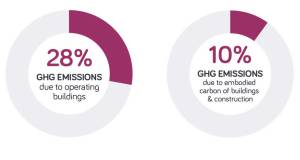 Architects call for urgent climate action ahead of COP 26
Architects call for urgent climate action ahead of COP 26

